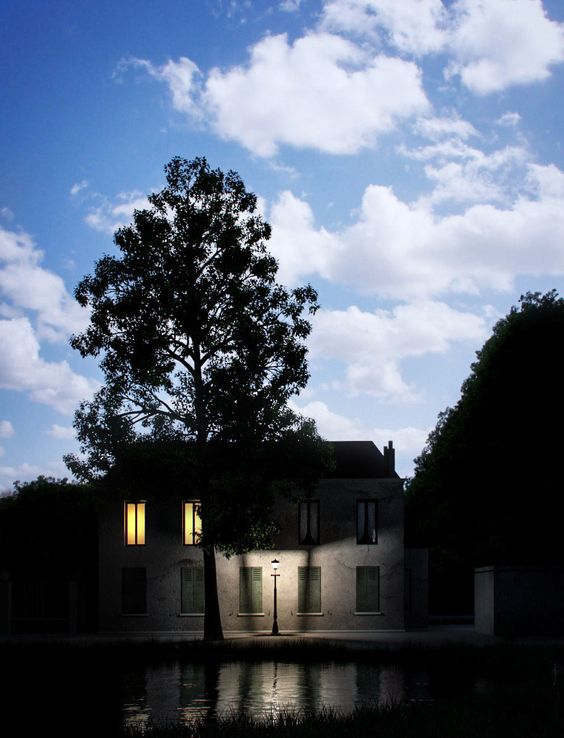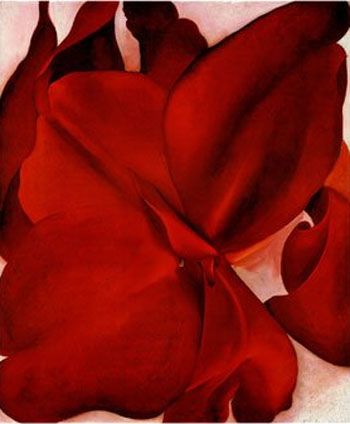“He’d taken great care with the suite. Statues, prints, and scroll paintings from his collection, precious works, he’d placed them in her room for study, for contemplation…. Without [them] she’d have gone mad. Whenever he left her, she selected a piece and centered her attention on it…fighting down the panic, the hopelessness, the fear. Concentrating some days on color, some on shape…she worked as she had when she was a graduate student, and Terence her lover and wealthy patron.” – from “The Great Wave.”
 Last year author Lawrence Block published a collection of short stories by seventeen different writers, primarily those known for mystery and horror. Each of these authors had written a story inspired by a painting of American artist Edward Hopper. The result, In Sunlight or in Shadow, was on my Favorites list for 2017, a book I described as the “Most Fun” of all the books I reviewed during that year. In Alive in Shape and Color, just released, sixteen authors, many of whom also contributed to the earlier anthology, are given much more latitude regarding the choice of artwork. Here each author has written a story about whatever piece of artwork most appeals to his/her imagination – free choice. The resulting collection, therefore, varies widely – from a Lascaux cave painting to something by Norman Rockwell, from Hieronymous Bosch to Georgia O’Keeffe, and from Hokusai’s “The Wave” to Michelangelo’s statue of David. Featuring work by Lee Child, David Morrell, Jeffery Deaver, Jonathan Santlofer, and Michael Connelly, among others, the collection also includes non-mystery writer Joyce Carol Oates, and art historian Gail Levin.
Last year author Lawrence Block published a collection of short stories by seventeen different writers, primarily those known for mystery and horror. Each of these authors had written a story inspired by a painting of American artist Edward Hopper. The result, In Sunlight or in Shadow, was on my Favorites list for 2017, a book I described as the “Most Fun” of all the books I reviewed during that year. In Alive in Shape and Color, just released, sixteen authors, many of whom also contributed to the earlier anthology, are given much more latitude regarding the choice of artwork. Here each author has written a story about whatever piece of artwork most appeals to his/her imagination – free choice. The resulting collection, therefore, varies widely – from a Lascaux cave painting to something by Norman Rockwell, from Hieronymous Bosch to Georgia O’Keeffe, and from Hokusai’s “The Wave” to Michelangelo’s statue of David. Featuring work by Lee Child, David Morrell, Jeffery Deaver, Jonathan Santlofer, and Michael Connelly, among others, the collection also includes non-mystery writer Joyce Carol Oates, and art historian Gail Levin.
S. J. Rozan’s “Under the Wave off Kanagawa,” also known more commonly as “The Wave,” uses Hokusai’s most famous wave painting to illustrate the story of a woman being held prisoner by her former lover, a story with direct parallels between the woman, who swims for relaxation in her captivity, and the boatmen in Hokusai’s famous woodblock print as they face the big wave. Warren Moore’s story “Ampurdan,” is another story in which the use of an iconic painting, Salvador Dali’s “The Pharmacist of Ampurdan Seeking Absolutely Nothing,” sets the tone and controls the action. In this story, Alan Bowling, a hiker, sees life as “merely a string of days becoming ellipsis, until one day each inhabitant reached an end of words.”
One of the more complex stories, “Girl with the Fan,”by Nicholas Christopher, uses the Gauguin painting of the same title both as its direct inspiration and as a motif throughout the action. Dividing the story into sections which use alternating points of view, the author depicts an art specialist who is kidnapped by members of the Gestapo in France who need help identifying which famous paintings from the late nineteenth century are real and which are their forgeries. Here Gauguin’s visit to the Marquesas, which produced his painting of “The Girl with the Fan,” merges with the story of Marie Venicasse, who had been the landlady for both Van Gogh and Gauguin, and her young daughter.
Other stories have little direct connection to the artwork. The story which will probably draw the most attention has only a symbolic relationship with its painting. “Cypresses,” by Vincent Van Gogh, has inspired author David Morrell to write “Orange is for Anguish, Blue for Insanity,” a story about a man named Van Dorn, loosely based on Vincent Van Gogh, in his suffering, his insanity, and his self-mutilation. The story’s speaker is a painter whose friend Myers, an art historian, is writing his dissertation on Van Dorn. Myers has discovered something new about Van Dorn’s ability to haunt those who become obsessed by their study of Van Dorn. The speaker becomes increasingly concerned for Myers, as he sees him losing his grip on reality in La Verge, a place of importance in the life of Van Gogh and Van Dorn. Well developed, hypnotic, and filled with a sense that art exerts special effects on viewers who connect with it, this story also carries elements of both terror and horror.
However good some of the individual stories may be, many readers of this collection may find the lack of a strong organizing principle, such as paintings by the same artist or of the same genre or period or style, to be a disadvantage overall. In fact, even within the several artistic genres here – famous paintings, woodblocks, illustrations, and sculpture – the artwork is often used to completely different purposes and effect (or no effect) by the authors. In the Lascaux cave painting of a bull, for example, the specific artwork is not a factor at all and is almost irrelevant to the story, “A Significant Find,” by Jeffery Deaver. It is the cave itself which serves as the setting for a story of love and loss. Likewise, the painting of “The Empire of Light” by Rene Magritte is much less important to the story “Gaslight” by Jonathan Santlofer than one would expect. The painting shows a tall street lamp illuminating the shuttered windows of a house in which a sick woman resides, but the action owes more to Hitchcock’s film “Gaslight” than to Magritte’s painting.
The same lack of direct connection between painting and story also holds true in the Georgia O’Keeffe painting of “Red Cannas,” in which neither the author Gail Levin nor her main character have any stated interest in the painting at all. In Levin’s story the main character has, with difficulty, gained an interview with O’Keeffe from whom she hopes to obtain permission to reproduce one of O’Keeffe’s paintings as the cover of her book. As the story evolves, O’Keeffe reveals her argumentative personality, and the painting which is shown at the beginning of the story plays no direct role.
Many of the stories are fun to read, regardless of whether the connection between the short story and its painting is obvious, and readers who are not familiar with Block’s previous collection, In Sunlight or in Shadow, may still find much to enjoy in this one. Those of us who had hoped this book might be more like that delightful offering, however, may suffer pangs of disappointment with this one. In Sunlight or in Shadow was on my list of Favorites for 2017, a book I described as the “Most Fun to Read” of all the books I reviewed in 2017. Unfortunately, Alive in Shape and Color lacks the driving energy, the sense of connection between story and artwork, and sense of purpose which made its predecessor so enjoyable for me.
Photos, in order: The author’s photo may be found on http://www.mulhollandbooks.com/2011/04/29/1031/
The Gauguin painting of “Girl with a Fan,” 1902 is from https://www.wikiart.org/en/paul-gauguin/girl-with-a-fan-1902
Van Gogh’s “Cypresses” is found on https://www.metmuseum.org/toah/works-of-art/49.30/
Magritte’s “Empire of Light,” painted between 1949 and 1954, appears on https://www.pinterest.com/pin/673921531709461099/
Georgia O’Keeffe’s “Cannas,” part of a series, is from https://www.pinterest.com/pin/250301691760657641/





